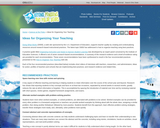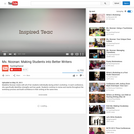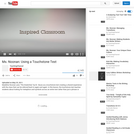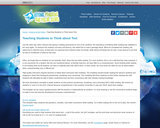
- Subject:
- Education
- English Language Arts
- Mathematics
- Reading Foundation Skills
- Reading Literature
- Material Type:
- Lesson Plan
- Author:
- Kelly Shivinsky
- Date Added:
- 05/22/2019


Instructional expert Jim Knight visits Chris Korinek to observe his social science classroom. Chris and Jim discuss scaffolding techniques, and when to use closed versus open questions.

Poster showing a soldier holding a rifle, peering through a question mark. Title from item. Caption: When are the other boys coming? P. 3177/7500.

This article highlights the four recommended research-based practices described in the How to Organize Your Teaching U.S. Dept. of Education What Works web site.


Madeline Noonan meets with all of her students individually during writer's workshop. In each conference, she specifically identifies strengths and two goals. Students continue to revise and rewrite throughout the workshop process and build confidence in their writing at the same time.

Madeline Noonan uses "The Sneetches" by Dr. Seuss as a touchstone text creating a shared experience with the class that can be referred back to again and again. In this lesson, the touchstone text teaches students about looking for metaphors and symbols across an entire text rather than just a phrase or sentence.

A prompt that a student, educator or researcher can paste into a chatbot in order to explore the assumptions behind their questions. I hope educators and students may remix this to contextualise it to different contexts.

Cover page for Questioning in Style Grade 8

This article provides an overview of questioning as a reading strategy and includes templates and links to books, lesson plans, and web sites for more information.

This is a technique to work on students questioning capabilities. We have used this in the past to introduce our Terrorism unit. The point of this is for students to build their questioning to new levels while working together. **This is an inquiry activity**Standard: SS.9-12.1. Create compelling questions representing key ideas within the disciplines.

Photos and objects provide amazing opportunities for close looking and student questions. Look closely at a photo of three Mars rovers to learn more about exploring space.

See a simple object thinking routine and learn ways to integrate object-based learning in your classroom.

This article discusses the importance of teaching students to reflect on text through direct instruction and modeling. The article includes a template that can be used with elementary students.